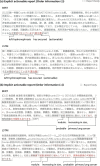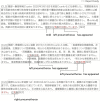Automatic detection of actionable radiology reports using bidirectional encoder representations from transformers
- PMID: 34511100
- PMCID: PMC8436473
- DOI: 10.1186/s12911-021-01623-6
Automatic detection of actionable radiology reports using bidirectional encoder representations from transformers
Abstract
Background: It is essential for radiologists to communicate actionable findings to the referring clinicians reliably. Natural language processing (NLP) has been shown to help identify free-text radiology reports including actionable findings. However, the application of recent deep learning techniques to radiology reports, which can improve the detection performance, has not been thoroughly examined. Moreover, free-text that clinicians input in the ordering form (order information) has seldom been used to identify actionable reports. This study aims to evaluate the benefits of two new approaches: (1) bidirectional encoder representations from transformers (BERT), a recent deep learning architecture in NLP, and (2) using order information in addition to radiology reports.
Methods: We performed a binary classification to distinguish actionable reports (i.e., radiology reports tagged as actionable in actual radiological practice) from non-actionable ones (those without an actionable tag). 90,923 Japanese radiology reports in our hospital were used, of which 788 (0.87%) were actionable. We evaluated four methods, statistical machine learning with logistic regression (LR) and with gradient boosting decision tree (GBDT), and deep learning with a bidirectional long short-term memory (LSTM) model and a publicly available Japanese BERT model. Each method was used with two different inputs, radiology reports alone and pairs of order information and radiology reports. Thus, eight experiments were conducted to examine the performance.
Results: Without order information, BERT achieved the highest area under the precision-recall curve (AUPRC) of 0.5138, which showed a statistically significant improvement over LR, GBDT, and LSTM, and the highest area under the receiver operating characteristic curve (AUROC) of 0.9516. Simply coupling the order information with the radiology reports slightly increased the AUPRC of BERT but did not lead to a statistically significant improvement. This may be due to the complexity of clinical decisions made by radiologists.
Conclusions: BERT was assumed to be useful to detect actionable reports. More sophisticated methods are required to use order information effectively.
Keywords: Actionable finding; Bidirectional encoder representations from transformers (BERT); Deep learning; Natural language processing (NLP); Radiology reports.
© 2021. The Author(s).
Conflict of interest statement
On behalf of all authors, the corresponding author states that there is no conflict of interest.
Figures









References
-
- Sloan CE, Chadalavada SC, Cook TS, Langlotz CP, Schnall MD, Zafar HM. Assessment of follow-up completeness and notification preferences for imaging findings of possible cancer: what happens after radiologists submit their reports? Acad Radiol. 2014;21(12):1579–1586. doi: 10.1016/j.acra.2014.07.006. - DOI - PMC - PubMed
Publication types
MeSH terms
LinkOut - more resources
Full Text Sources

